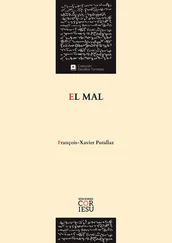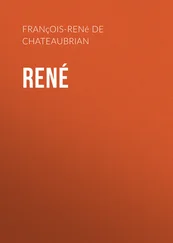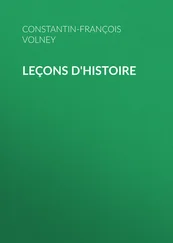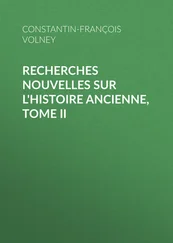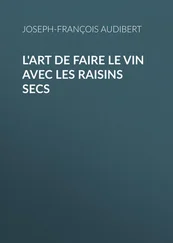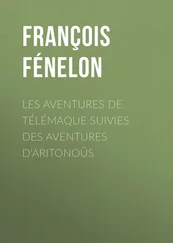François Dominique - Aseroë
Здесь есть возможность читать онлайн «François Dominique - Aseroë» весь текст электронной книги совершенно бесплатно (целиком полную версию без сокращений). В некоторых случаях можно слушать аудио, скачать через торрент в формате fb2 и присутствует краткое содержание. Город: New York, Год выпуска: 2020, ISBN: 2020, Издательство: Bellevue Literary Press, Жанр: Современная проза, на английском языке. Описание произведения, (предисловие) а так же отзывы посетителей доступны на портале библиотеки ЛибКат.
- Название:Aseroë
- Автор:
- Издательство:Bellevue Literary Press
- Жанр:
- Год:2020
- Город:New York
- ISBN:978-1-942658-78-8
- Рейтинг книги:5 / 5. Голосов: 1
-
Избранное:Добавить в избранное
- Отзывы:
-
Ваша оценка:
- 100
- 1
- 2
- 3
- 4
- 5
Aseroë: краткое содержание, описание и аннотация
Предлагаем к чтению аннотацию, описание, краткое содержание или предисловие (зависит от того, что написал сам автор книги «Aseroë»). Если вы не нашли необходимую информацию о книге — напишите в комментариях, мы постараемся отыскать её.
Aseroë — читать онлайн бесплатно полную книгу (весь текст) целиком
Ниже представлен текст книги, разбитый по страницам. Система сохранения места последней прочитанной страницы, позволяет с удобством читать онлайн бесплатно книгу «Aseroë», без необходимости каждый раз заново искать на чём Вы остановились. Поставьте закладку, и сможете в любой момент перейти на страницу, на которой закончили чтение.
Интервал:
Закладка:
From the beginning of this strange flowering, the fungus emits an odor so unbearable and so persistent that even the most distracted passerby cannot fail to notice it.
Arrived at their full maturity, the most beautiful of these specimens resemble fingers or, rather, the talons of a raptor curled earthward. I know of no other animal that has a skin so obscene. The thing looks like a flayed cadaver, immobile, anchored to the earth.

Having just written all this, I stand back to assess the negative effects of my experiment. In order to report on a new form of life, I wanted to avoid the weight of metaphor, but far removed from the realm of living things, I realize I have given in to mere imagery. I had thought that this most singular of all mushrooms, given its unique character, might have allowed me to avoid the pitfalls of figurative language, yet it relentlessly confounded my thinking and propelled me into the improper use of zoomorphic and anthropomorphic imagery—that is, “egg,” “flesh,” “members,” “skin,” “fingers,” not to mention the unavoidable “flayed cadaver” of the dissection table.
For me, this business is more serious than it seems. It has taught me, at considerable cost, that one has to submit to the unruliness of metaphorical description in order to gain access to another level of perception and of language, to another form of life.
To make myself clear, let me point out that the vocabulary of mycology (in whatever language) insidiously invites organic, libidinous metaphorization. There is no perversion, even the most morbid and the most criminal, that remains unsuggested by even the most learned and objective of mycological descriptions. I have now come to realize that this particularity, which is without any example in the other natural sciences, does not depend on the native language or on the prurient turn of mind of the specialist; it stems from the thing itself, from the fundamental character of all types of mushrooms.
I could prove this assertion by a detailed analysis of the Latin binomials that form the basis of the terminology of mycology, but a list of common names, better known to the reader, should be clear enough. Here they are in French:
Unguline marginée, vulvaire gluante, vesse-de-loup, trompette-des-morts, tricholome malpropre, tremellodon gélatineux, tête de Méduse, sulfurin puant, satyre puant, striée hirsute, entolome livide, pied de griffon, phallus impudique, oeuf du diable, oignon de loup, nymphe des montagnes, nonnette voilée, mucidule visqueuse, marasme brûlant, lépiote déguenillée, langue de chat, lactaire languissant, grosse queue, gorge noire, flammule pénétrante, exidie glanduleuse, drosophile larmoyante, doigt de gant, cul rouge, cul vert, bise de curé, amanites étranglées, engainées, phalloïdes, vaginées, vraies et fausses panthères, agaric meurtrier .
And here, in English translation:
Marginated claw, sticky vulva, wolf’s fart, trump of the dead, filthy gland, tremulous jelly, Medusa’s head, stinky sulfur, stinky satyr, hairy groove, livid embryo, griffon’s foot, shameless phallus, devil’s egg, wolf’s onion, mountain nymph, veiled novice, slimy milkcap, burning marasmus, unspooled scurf, cat’s tongue, languid lacteal, lewd tail, black breast, penetrating flamelet, glandular surge, teary flycatcher, glove finger, red butt, green butt, priest’s kiss, strangulated, sheathed amanta, phalloids, vaginateds, true and false panthers, deadly agaric.
I have, unfortunately, every reason to believe in the reifying power of certain words that have no other use in ordinary life than to arouse the senses and thus merely lead the flesh to orgasm or disgust.
Sed occurrit quiddam de nihilo. Nam ex quocumque fit aliquid, id causa est ejus quod ex se fit, et omnis causa necesse est aliquod ad essentiam effecti praebat adjumentum . (Anselm of Canterbury, Monologion , 8, 1). It goes without saying: no sooner said than done.
Whoever has made their way through the underbrush in the fall can observe, without, however, being able to explain the fact, that mushrooms exert a power of attraction over language. Indeed, whether picked or not, they have this strange capacity of transmitting a little of their indeterminate substance into the words that everyone adorns them with; so that one must wonder, long after one has left them behind, whether they don’t leave some trace of their existence upon our actions as we tend to our daily lives, far from the woods.
Could it be that this oldest kingdom of nature among living things has transmitted to succeeding kingdoms (vegetable, animal, and human) the privilege of here and there arousing a muted organic presence, a substantial manifestation of the passage from the inert to the living—of which the mind, a latecomer, has retained only an unconscious trace and about which it can say nothing?
Hence, this uncanny power of attraction that exists between the word and this thing , this fungus among us, both situated at the two extremes of evolution, whenever they happen to meet.

On October 13, I resolved to test this hypothesis by taking on the Phallaceae whose resemblance to the reproductive organs of the human race can escape only the most nearsighted or the most benighted of creatures.
The mycological classification system provides an “analytical key” permitting specialists to identify an elusive species more rigorously than by the comparative use of a photograph or a drawing. Thus, all known mushrooms can be described in accordance with their perceptible characteristics (odor, texture, appearance, color, spore shape, reaction to certain chemicals) that pertain to a genus or to a more restricted class, to a family, a species, a subspecies, down to the precise identification, by successive eliminations, of the elusive specimen in question.
If I consider Anthurus archeri , the “octopus stinkhorn” or the “devil’s fingers,” I can identify it by noting, in turn, the characteristics of its division (Basidiomycota), of its class (Agaricomycetes), of its order (Phallales), of its family (Phallaceae), of its genus ( Clathrus ), and then of its species.
The Phallaceae include a small number of genuses and species: Phallus impudicus (that nauseating cone sometimes called “devil’s egg”), Mutinus caninus (or “dog stinkhorn”), Clathrus ruber (or “basket stinkhorn,” a kind of latticed sphere, partially open, like an enigma), Colus hirudinosis (another absolutely repulsive stinkhorn fungus), and Anthurus archeri .
Not much is known about the propagation of Phallaceae; they disappear here, appear elsewhere, thousands of kilometers away, and clearly adapt to the local climate.
I decided to sleuth out Anthurus , watching for the slightest mutation, and, if possible, the appearance of a new species, as yet unnamed . If my experiment were to succeed, I would find myself faced with the following alternatives: either the discovery of a new Phallaceae and the invention of an appropriate name or the naming of an unknown species, which, ipso facto, would cause it to materialize.
The first procedure is the one used by the researcher. It was recommended by Jehovah in the Garden of Eden (Gen. 2:19), even though the creation story never breathed a word about mushrooms.
The second procedure is a matter for jackasses, obscurantists, Jehovah Himself, poets, or misunderstood experts. I was tempted by this second one, without having the presumptuousness of including myself in any of the categories cited above. I had to proceed as I saw fit, in order to throw light on the strange relationship that mushrooms maintain with the world of thought.
Читать дальшеИнтервал:
Закладка:
Похожие книги на «Aseroë»
Представляем Вашему вниманию похожие книги на «Aseroë» списком для выбора. Мы отобрали схожую по названию и смыслу литературу в надежде предоставить читателям больше вариантов отыскать новые, интересные, ещё непрочитанные произведения.
Обсуждение, отзывы о книге «Aseroë» и просто собственные мнения читателей. Оставьте ваши комментарии, напишите, что Вы думаете о произведении, его смысле или главных героях. Укажите что конкретно понравилось, а что нет, и почему Вы так считаете.




